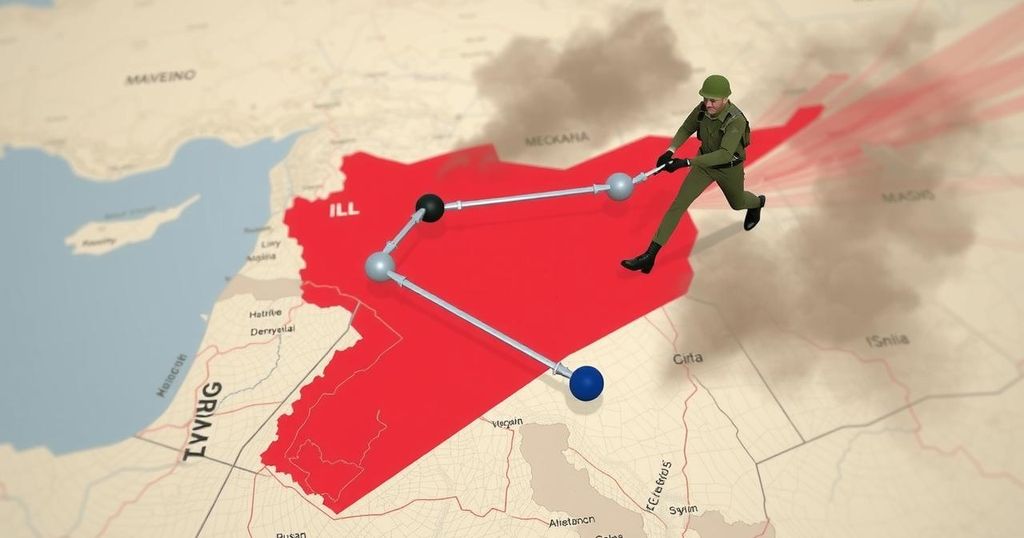Significant Russian Military Withdrawal from Syria: Implications and Developments
Russia has commenced a significant withdrawal of military forces and equipment from Syria, with officials uncertain if the move is permanent. Intelligence indicates an assessment of negotiations with rebel group HTS to retain key military bases. Satellite imagery shows preparations for withdrawal at Khmeimim airbase, enhancing U.S. operational capabilities against ISIS in the region.
Recent reports indicate that Russia has initiated a substantial withdrawal of military personnel and equipment from Syria, a move confirmed by U.S. and Western officials familiar with the situation. This withdrawal, characterized as significant, reportedly commenced last week although there remains uncertainty regarding its permanence. Intelligence sources suggest that Russian officials are currently assessing the willingness of Hayat Tahrir al-Sham (HTS), the predominant rebel faction in Syria, to engage in negotiations that could facilitate Russia’s continued presence at critical bases such as the Khmeimim airbase and the Tartus naval facility.
Kremlin spokesperson Dmitry Peskov acknowledged the importance of maintaining communication with Syrian rebel forces to manage Russia’s strategic interests on the ground. Furthermore, according to U.S. officials, naval assets are being relocated from Syria to Libya, with heightened attempts by Moscow to influence Libyan National Army leader Khalifa Haftar regarding a port claim in Benghazi. Loss of access to a Mediterranean port would severely restrict Russia’s capacity to project power and transfer illicit materials in the region.
Satellite imaging has unveiled preparations for a Russian military exit from Syria, with evidence of loading aircraft at Khmeimim airbase, including two heavy AN-124 transport planes. Simultaneously, military assets such as a Ka-52 helicopter and parts of the S-400 air defense system are being dismantled.
U.S. Secretary of State Antony Blinken refrained from commenting on the withdrawal while Pentagon Press Secretary Major General Patrick Ryder noted that reduced Russian air defenses in Syria have permitted more robust U.S. operations against ISIS. U.S. Central Command has executed multiple airstrikes targeting ISIS interests in the area since the departure of President Assad.
In recent months, the geopolitical landscape in Syria has been shaped significantly by Russia’s involvement and the subsequent ousting of President Bashar al-Assad. The evolving situation has prompted analyses of Russian military strategy, particularly concerning its bases in Syria, which are critical for its influence in the Mediterranean region. The United States and its allies have closely monitored these developments, as shifting power dynamics could impact counterterrorism operations and regional stability.
In summary, the withdrawal of Russian military resources from Syria marks a pivotal shift in the ongoing conflict and reflects the complexities of international power dynamics in the region. The potential for continued Russian presence at strategic bases hinges on negotiations with Syrian rebel factions, while U.S. forces have gained operational advantages amidst these changes. Surveillance and intelligence efforts remain crucial in understanding the full implications of Russia’s military maneuvers.
Original Source: www.cnn.com




Post Comment